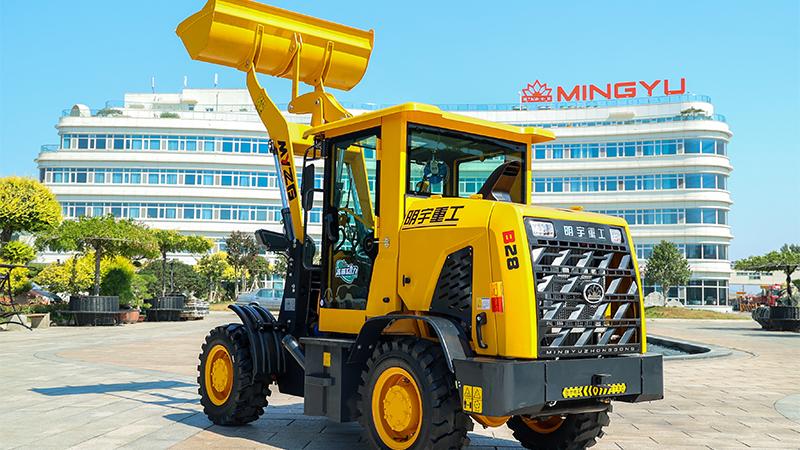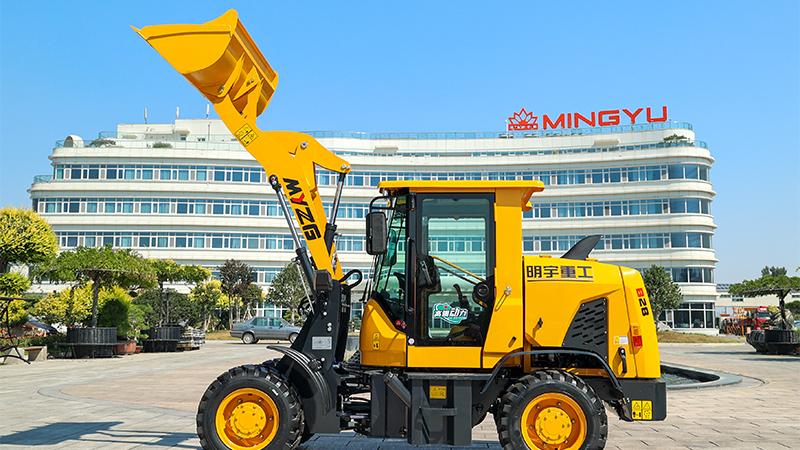The operation of heavy machinery like loaders on sloped or uneven terrain represents one of the most hazardous activities in construction, warehousing, and landscaping. The gravitational forces at play significantly alter the dynamics of the machine, turning a routine task into a potential catastrophe of tipping, rolling, or losing load control. The Occupational Safety and Health Administration (OSHA), as the paramount federal agency governing workplace safety in the United States, has established a comprehensive, albeit complex, framework of regulations and guidelines designed to mitigate these risks. While many of these rules are encapsulated under the broad umbrella of 29 CFR 1926.602 (Material Handling Equipment) for construction and 29 CFR 1910.178 for general industry, their practical application to operating a loader, whether it is a compact skid-steer or a massive diesel forklift adapted for rough terrain, on a slope demands meticulous attention to detail, rigorous training, and an unwavering commitment to procedural adherence. Understanding these requirements is not merely about legal compliance; it is a fundamental ethical obligation to protect personnel, preserve equipment, and ensure the structural integrity of the worksite. This analysis delves into the core tenets of OSHA's approach, translating legal text into actionable safety protocols for operators and site supervisors alike.
A foundational pillar of OSHA's safety philosophy, especially pertinent to slope operations, is the concept of a competent and qualified operator. OSHA mandates that any individual operating powered industrial trucks, a classification that includes most loaders and forklifts, must be formally trained and evaluated. This is not a suggestion but a strict requirement. The training must encompass formal instruction (e.g., lectures, video), practical hands-on training, and a final evaluation of the operator's performance in the workplace. For slope operations, this training becomes exponentially more critical. A qualified trainer must instruct operators on the specific dangers associated with inclines, including the drastic changes in the machine's center of gravity, the increased risk of lateral tip-over when traversing a slope, and the phenomenon of load instability. Operators must be thoroughly versed in consulting the machine’s load capacity chart, which details how the maximum safe load diminishes considerably when operating on any incline. Furthermore, they must receive hands-on practice on graded surfaces under controlled, supervised conditions to develop the necessary feel for the machine's behavior. This includes learning to ascend and descend slopes correctly, which for almost all loaders means traveling with the heavy end—typically the engine and counterweight—pointing uphill. For a standard diesel forklift, this means driving forward up the slope and in reverse down the slope, keeping the load uphill. OSHA’s emphasis on training ensures that the first and most crucial safety component—the human operator—is prepared to make split-second decisions that uphold safety on unpredictable terrain.
Beyond the operator, OSHA regulations heavily govern the mechanical integrity and pre-operational inspection of the equipment itself, a non-negotiable prerequisite for any task, particularly those on challenging slopes. Before a loader is ever driven onto an incline, it must undergo a rigorous inspection to ensure every critical system is functioning as designed. OSHA standards require a pre-shift inspection by the operator to check for issues like brake functionality, steering responsiveness, tire pressure and condition (crucial for traction on slopes), control mechanism operation, and warning devices like horns and lights. For a diesel forklift, this also includes checking for fuel, oil, and water leaks, which could not only cause a fire hazard but also create slippery surfaces that are perilous on a grade. The condition of the load-bearing components, such as the forks, carriage, and mast, is also scrutinized for any cracks, distortion, or excessive wear that could lead to a catastrophic failure under stress. Furthermore, the use of attachments can dramatically alter the stability and operating characteristics of the loader. OSHA requires that any attachment used on a powered industrial truck must be deemed appropriate by the manufacturer and that the truck’s rated capacity must be re-evaluated and clearly marked on the truck with the attachment installed. Operating a loader with a sideshifter or a set of forks on a slope already reduces its safe lifting capacity; using a non-approved or malfunctioning attachment on an incline is an invitation for a violation and, worse, a serious accident. This meticulous focus on equipment readiness creates a second layer of defense, ensuring the machine is physically capable of handling the demands placed upon it.
Finally, OSHA's requirements extend into the active operation and the management of the worksite environment. This is where theory and training meet the reality of dirt, mud, and gravity. A key directive is to always maintain a safe speed appropriate for the conditions of the ground and the slope. OSHA prohibits fast turns, sudden stops, and other erratic maneuvers, especially on grades, as they can instantly destabilize the loader. The path of travel must be carefully assessed and, if necessary, prepared. This includes evaluating the slope's angle and consistency—is it a firm, compacted gravel incline or a soft, muddy bank that could give way? Ground conditions can change rapidly with weather, making continuous assessment a necessity. Operators are required to keep the load as low as possible during travel to maintain a low center of gravity, only raising it enough to clear the ground surface. Perhaps one of the most critical and often-cited rules is never turning on a slope. The correct procedure is to drive to the top or bottom of the incline on a straight path before making any turn. For a large diesel forklift, a turn on a slope can shift the combined center of gravity of the machine and its load beyond the stability triangle, leading to a lateral tip-over in seconds. Communication is also vital; using spotters on slopes where vision is obstructed is a recognized best practice that aligns with OSHA’s general requirements for clear communication and signaling. By mandating these specific operational protocols, OSHA provides a clear, actionable checklist for conducting work on slopes safely, transforming the immense potential energy of a loaded machine on an incline from a threat into a managed variable.
Post time:Aug.21.2025



